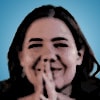Apparently, for Once Upon a Time, the term “fairy tale” is loosely translated as “a story famous as a Disney movie.” That’s the only possible explanation for the most recent story announced for the fantasy show. Because it is not, by most definitions, any sort of fairy tale. Keep reading to find out the new story coming to Once Upon a Time.
According to EW.com, a Once Upon a Time will soon take on the classic tale, Alice in Wonderland. The episode, expected to air in March, will be called “Hat Trick” and will feature Roger Daltrey (of The Who) as the voice of a talking caterpillar.
But Alice in Wonderland is not a fairy tale.
It is a familiar story, beloved by children for generations and the subject of several film adaptations, but Alice still isn’t a fairy tale. What is it then?
A Brief History of Alice in Wonderland
Alice’s Adventures in Wonderland is a novel published in 1865 by Charles Lutwidge Dodgson — known by his more-famous pseudonym, Lewis Carroll. Dodgson, a mathematician and author, came up with the basic story at the request of a colleague’s daughter, Alice Liddell. Eventually, the work was published in novel form.
The fantasy aspects of the book are obviously the most popular, but the work has other components as well. Logic and mathematics figure strongly in the book — the book’s sequel, Through the Looking Glass, can even be played as a chess game! And the bizarre characters found throughout the work are widely believed to parody prominent figures of the day in England.
The book was incredibly popular among both children and adults, eventually spawning more than a dozen movie adaptations. The animated Disney version of 1951 merely represents the most popular adaptation of Lewis Carroll’s two Alice novels.
The Disney Connection
Beloved and classic as it may be, Alice in Wonderland is not a fairy tale. The story does not live in the same fictional universe as tales like “Snow White” or “Cinderella.” The combination only makes sense in one arena: Disney films.
Alice isn’t the first example of this in Once Upon a Time. Way back in the pilot episode, we got to know characters from Pinocchio, and Jiminy Cricket’s alter-ego remains a major character even now. Pinocchio is an intriguing fantasy that echoes classic fairy tales. But that is not the origin of the story. The Adventures of Pinocchio is instead an Italian children’s novel, published in 1883 by Carlo Collodi.
Of course, we mostly know Pinocchio as a Disney movie.
The Underlying Logic of Once Upon a Time
In some ways, it doesn’t matter where Once Upon a Time finds its source material. The show alters every story to a great extent, creating new plots and characters whenever appropriate. So why does it matter?
It matters because of the logic underlying the whole of Once Upon a Time. If we are to believe that the fairy-tale world actually existed, then it follows that the stories we know would be echoes of that reality. This works when classic fairy tales are used — their familiarity in our culture could be the result of filtered knowledge from that other world.
But, when we lose the distinctly fairy-tale connection between the stories adapted by Once Upon a Time, this theory falls apart. Logic then implies that somehow the Walt Disney company — and only the Walt Disney company — has the inside line on the fairy-tale world.
Is that what Once Upon a Time wants us to believe? That Disney knows all?
Hey, it’s possible. A corporate agenda could underlie everything in this fairy tale show. But this twisted logic — a theme so beloved of Alice in Wonderland — does take away from the magic of Once Upon a Time.
Should Once Upon a Time stick only to classic fairy tales? Does the strong Disney connection bother you? Do you think Once manages to maintain its internal logic anyway? Leave your comments below!
(Image courtesy of ABC)

Senior Writer, BuddyTV
Laurel grew up in Mamaroneck, NY, Grosse Pointe, MI and Bellevue WA. She then went on to live in places like Boston, Tucson, Houston, Wales, Tanzania, Prince Edward Island and New York City before heading back to Seattle. Ever since early childhood, when she became addicted to The Muppet Show, Laurel has watched far too much TV. Current favorites include Chuck, Modern Family, Supernatural, Mad Men and Community. Laurel received a BA in Astrophysics (yes, that is possible) from Colgate University and a PhD in Middle Eastern Studies and History of Science from Columbia University before she realized that television is much better than studying.
